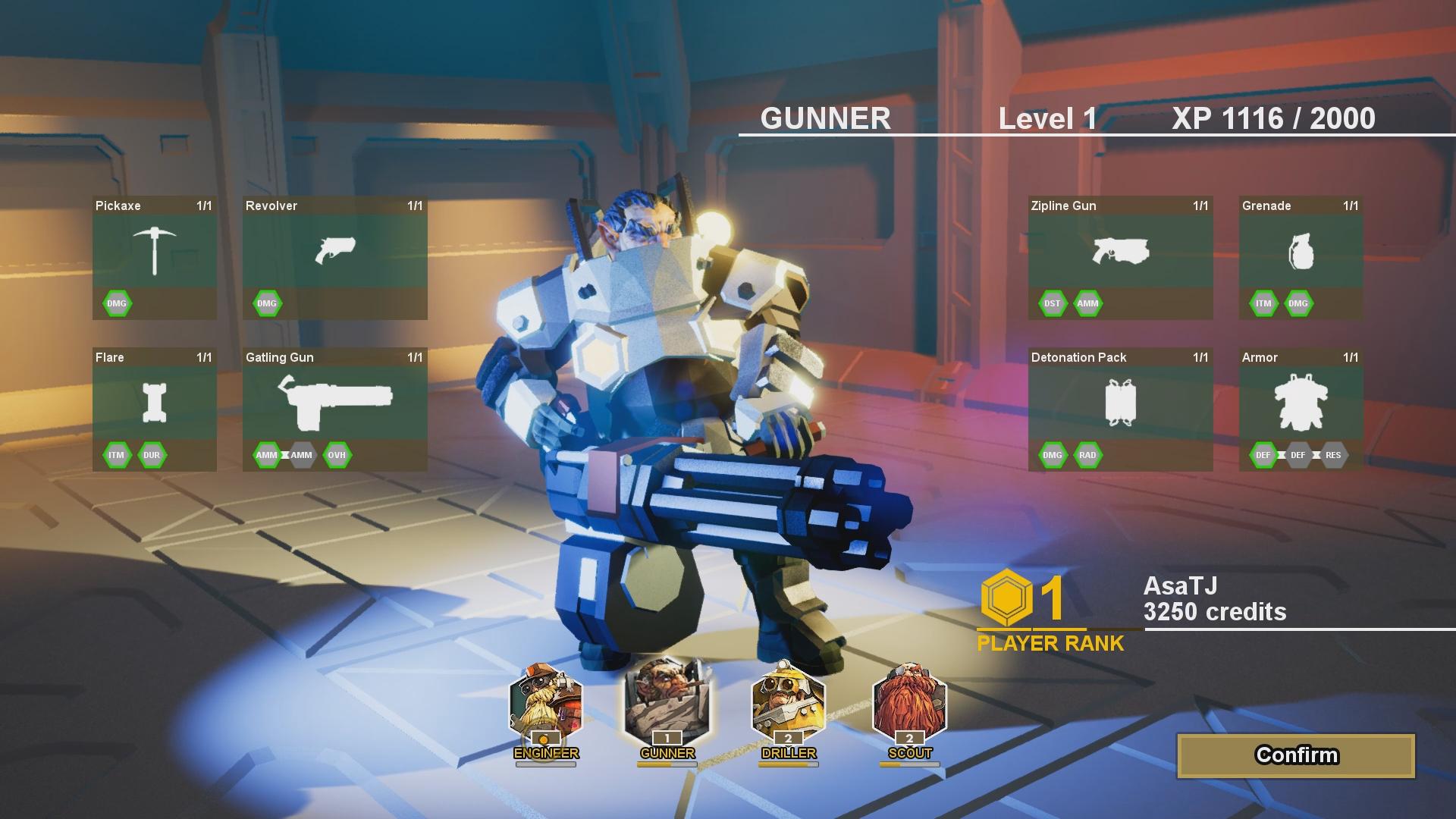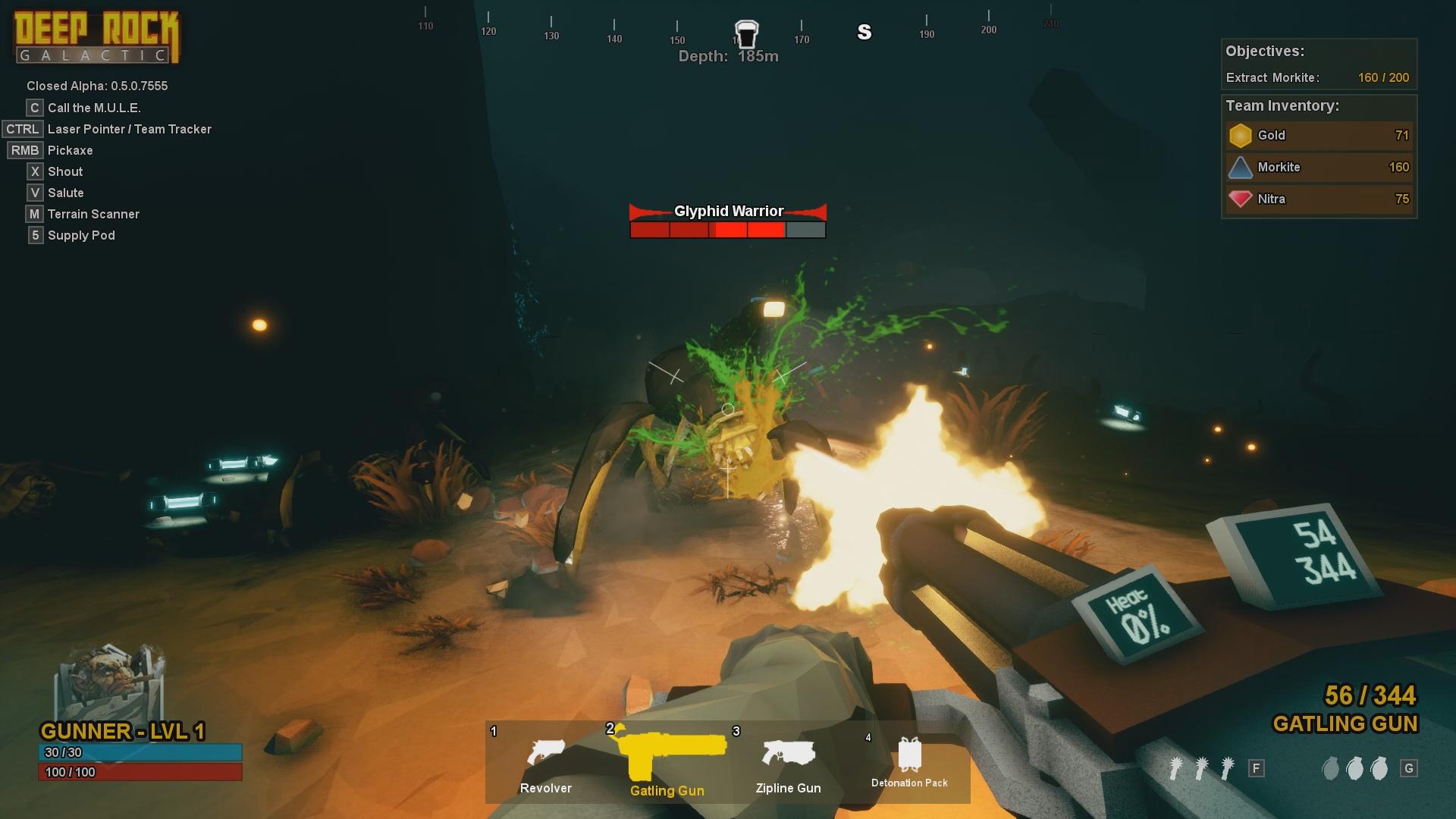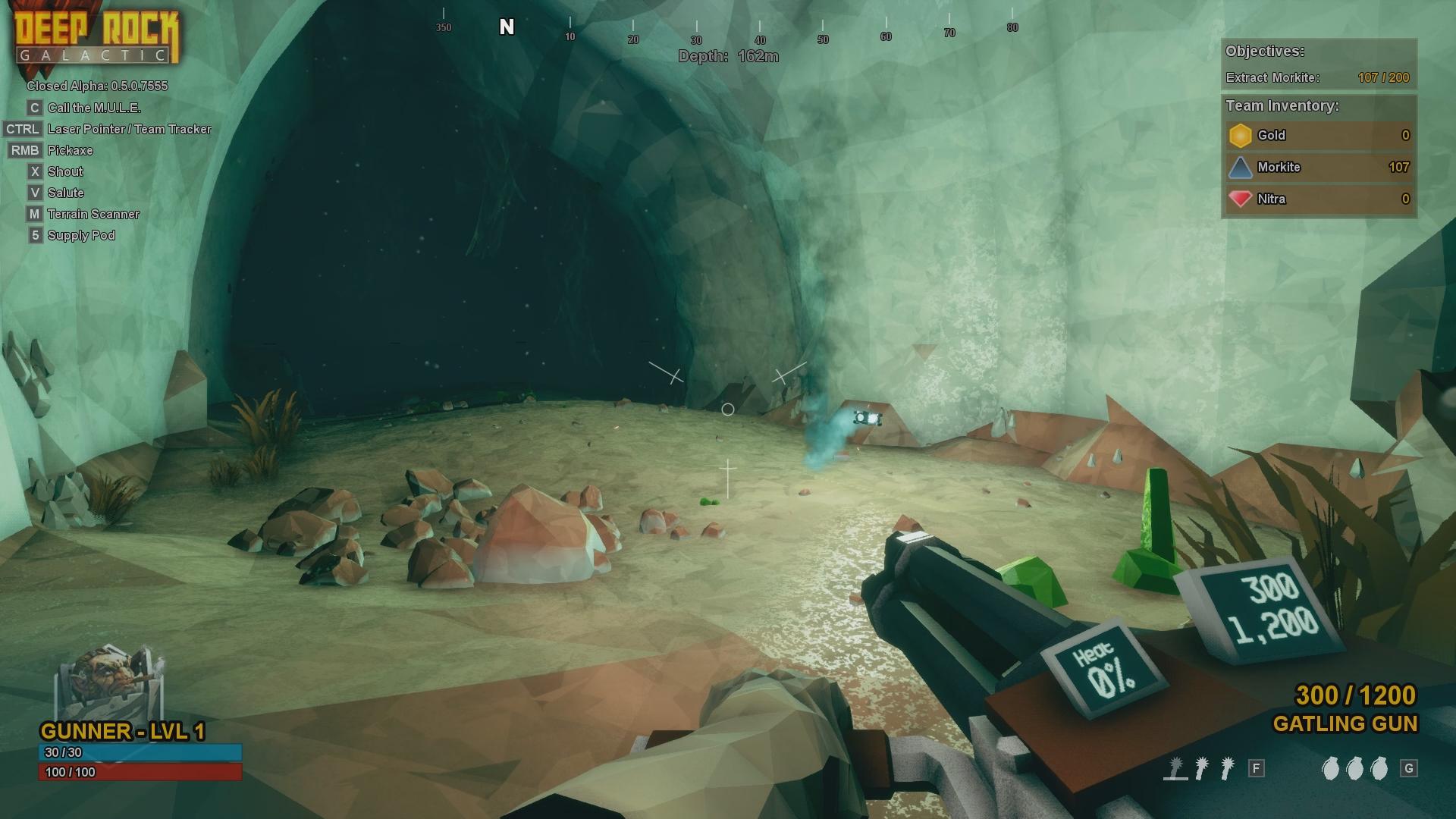
As I sat inside a vehicle burrowing deep into the surface of the planet Hoxxes, a couple things tipped me off that this probably wouldn’t be a simple, in-and-out resource extraction job. They’d sent my dwarf in with a gatling gun, a tool which doesn’t have many traditional uses in mining. Sure enough, Deep Rock Galactic is as much about blasting away a variety of hostile bugs with your friends as it is about collecting valuable ore from its randomly-generated, voxel-based levels.
Balancing your team’s attention and resources between extracting ore and killing off waves of enemies is what makes Deep Rock engaging, and sets it apart from other horde shooters. There are also lots of interesting ways to use the terrain to your advantage due to the sculptability of the game's alien caves, such as digging out a horizontal tunnel to retreat into and placing a gun turret at the entrance.
However, I never felt I was in much of a rush to get the mining portion done, which led to a lot of missions where it made sense for everyone to focus on combat until the creepy crawlies were thinned out, then mine in the lull between waves. Creating more pressure to pursue both objectives at once would definitely ramp up the tension and improve the interplay between the two systems.
In the spectrum of Early Access games, Deep Rock is very early at the moment. Most of the central hub from which you’ll launch missions is locked off beyond force fields with enticing names like “Hangar” and “Treasure Vault.” Some of the geometry and textures seem like placeholders. Some of the machinery doesn’t even have collision enabled yet, and many other objects have hilariously bugged physics. But since there’s really nothing to do between missions so far, you won’t be spending a lot of time there anyway.
The caves are dark and atmospheric, rich with veins of three different ores. As the layouts and geometry are randomly generated, each delve has a genuine feeling of exploration and fear of the unknown attached. The grinding, echoing sounds of the insertion drill and that first leap into almost total darkness go a long way toward enhancing this.

The Engineer can place elevated platforms and sentry turrets, both of which are life savers when facing large hordes.
Within, you'll be attacked by special waves of enemies or larger boss monsters to challenge your adaptability and teamwork. While battling everything from ankle-biting swarmers and massive behemoths that can only be damaged by shooting them from behind, I was impressed by the use of light to shape the tactical environment. The mines are dark enough to be disorienting, and each dwarf has a limited stash of flares that can be used to illuminate a battlefield or light up a large chamber to locate ore. They fizzle out after a certain amount of time, and maintaining visibility is an objective you can’t really afford to ignore.
Other than the ability to create light, the four playable dwarves are pretty different. The Gunner is armed with a gatling gun and can dish out the most damage at the cost of somewhat limited mobility—though he can deploy a persistent zipline that allows quick travel between any two anchor points. The Driller has two, massive mining drills for hands and can burrow through even the sturdiest stone very quickly, making him a master of reaching difficult ore veins and punching through into new caverns. He also has access to a flamethrower, which is great for dealing with swarms of small enemies.
The biggest gaming news, reviews and hardware deals
Keep up to date with the most important stories and the best deals, as picked by the PC Gamer team.

The Scout comes with a shotgun and a grappling hook, making him the most mobile class. But more importantly, his flares last longer and can adhere to surfaces instead of just bouncing around, which makes him invaluable for maintaining visibility. Finally, the Engineer can place elevated platforms and sentry turrets, both of which are life savers when facing large hordes. Of these, the Driller felt the most novel, as his greatest utility is being able to shape the environment itself. Creating strong positions out of the voxel bedrock or facilitating a quick escape by carving a new path to an extraction zone always felt like a useful contribution to my team’s success.
At this early stage, Deep Rock Galactic is an innovative, tense horde shooter. But there just isn’t much to interact with outside its missions, and prolonging a dig just to collect a bit more gold and be rewarded with a bit more XP therefore feels like a hollow incentive at this stage. When the home base layer is more fleshed out, I’ll be interested to see what kind of progression and rewards will be dangled in front of me to encourage digging greedily and deep.
The devs also have plans for more cave “biomes,” more mission types, and have even hinted at more enemy genuses beyond the Glyphid insects we’ve seen so far. All of this would be welcome, as a game about exploring the dark depths is likely to lose some luster if there aren’t enough different experiences to uncover. Already, I’ve seen some pretty cool environments, including a large, vertical chamber with a gushing flame geyser. The more of that, the better.
Deep Rock Galactic is running an open beta on PC from Thursday, Nov. 9 to Sunday, Nov. 12. Sign up before Nov. 6 at deeprockgalactic.com
Len Hafer is a freelancer and lifelong PC gamer with a specialty in strategy, RPGs, horror, and survival games. A chance encounter with Warcraft 2: Tides of Darkness changed her life forever. Today, her favorites include the grand strategy games from Paradox Interactive like Crusader Kings and Europa Universalis, and thought-provoking, story-rich RPGs like Persona 5 and Disco Elysium. She also loves history, hiking in the mountains of Colorado, and heavy metal music.

